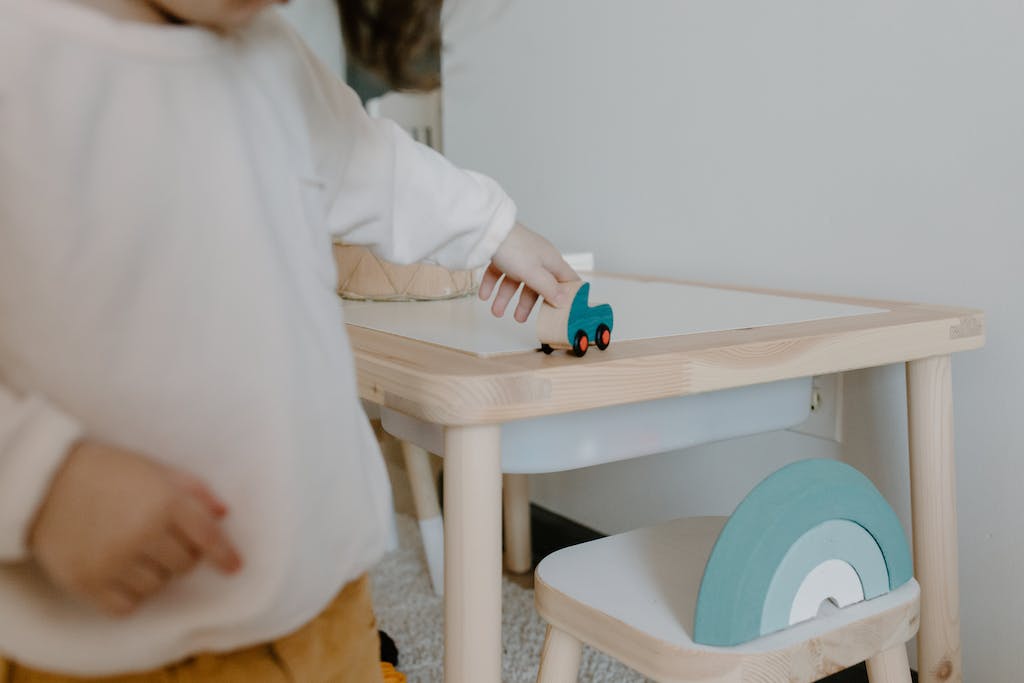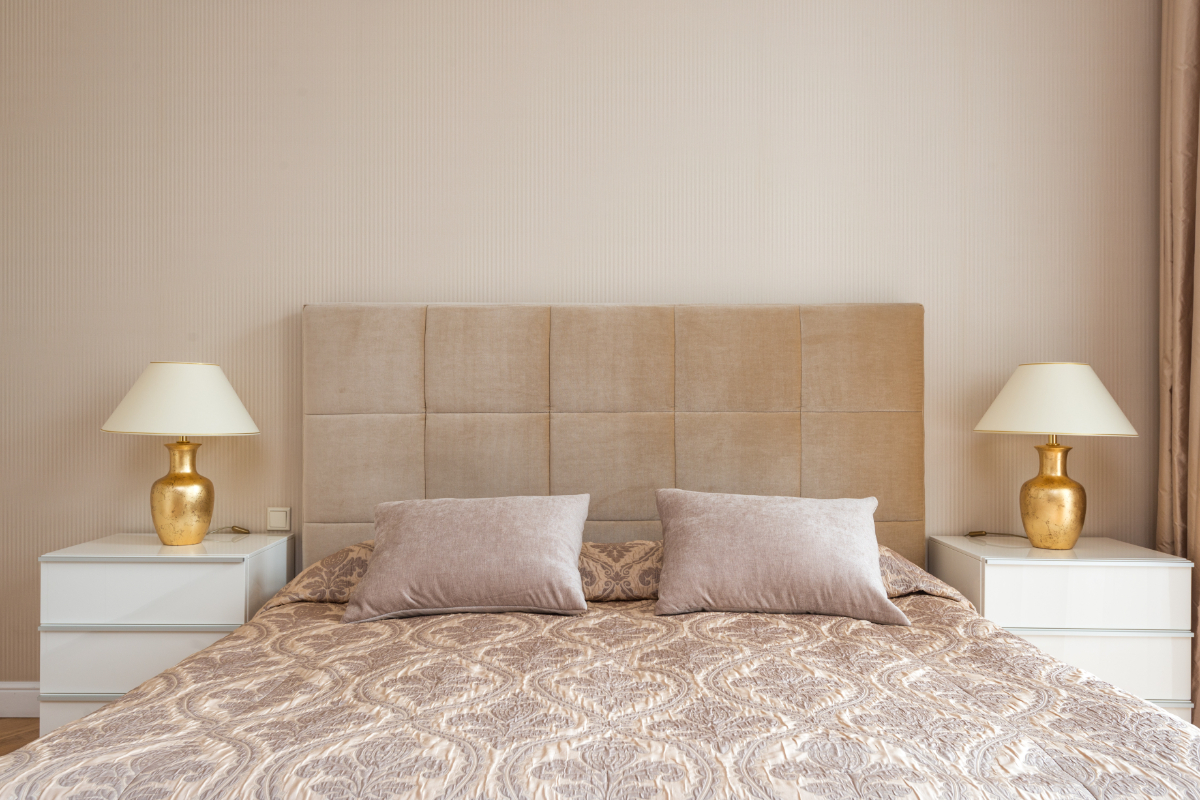Minimalism For Families: Making It Work
There are some affiliate links below, but they are all products I highly recommend. For more info, view my disclosure here.
Are you feeling overwhelmed by the constant chaos and clutter in your home? Do you find yourself constantly cleaning up after your kids, only for the mess to return moments later? If so, it may be time to consider embracing minimalism as a family.
Minimalism is not just about having less stuff; it’s about creating a more intentional and balanced lifestyle. You will learn the principles of minimalism and how to apply them to your family life. You will discover strategies for simplifying your home environment, decluttering with ease, and minimizing toys and possessions.
By establishing routines and systems, you can create a more organized and peaceful home. Ultimately, by embracing minimalism as a family value, you can create a space that promotes mindfulness, connection, and a sense of calm amidst the chaos.
Are you ready to make minimalism work for your family? Let’s get started!
Understanding the Principles of Minimalism
Now, let’s dive into the principles of minimalism and how they can transform your family’s life.
Minimalism is all about simplifying your life and focusing on what truly matters. It encourages you to let go of excess stuff and instead prioritize experiences and relationships. By embracing minimalism, you can create a peaceful and clutter-free environment for your family to thrive in.
The first principle of minimalism is to declutter. Take a look around your home and identify items that no longer serve a purpose or bring you joy. Donate or sell these items to free up space and reduce the amount of stuff you have to maintain. This will not only make your home more organized but also save you time and energy.
The second principle of minimalism is to prioritize quality over quantity. Instead of buying cheap, disposable items, invest in high-quality products that will last longer and serve your family better. This approach will not only save you money in the long run but also reduce waste and contribute to a more sustainable lifestyle.
Minimalism encourages you to be intentional with your time and energy. Instead of overcommitting and spreading yourself too thin, focus on activities that truly bring you joy and add value to your life. By simplifying your schedule, you can create more meaningful moments with your family.
Incorporating these principles into your family’s life can help create a more peaceful and fulfilling existence. Start embracing minimalism today and watch as it transforms your family’s life for the better.

Simplifying Your Home Environment
To create a simplified home environment, it’s important to declutter and organize efficiently. Start by going through every room in your house and getting rid of items that no longer serve a purpose or bring you joy. This can be a difficult process, but remember that less is more when it comes to minimalism.
As you declutter, consider implementing a one in, one out rule. This means that for every new item you bring into your home, you should remove one item. This will help prevent clutter from accumulating in the future.
Once you have decluttered, it’s time to organize. Invest in storage solutions that are practical and aesthetically pleasing. Utilize baskets, bins, and shelves to keep items organized and easily accessible. Labeling containers can also be helpful in maintaining an organized space. Take the time to find a designated spot for each item in your home, and make sure to put things back in their place after using them.
In addition to decluttering and organizing, consider adopting a minimalist mindset when it comes to purchasing new items. Before making a purchase, ask yourself if the item is truly necessary and if it aligns with your values and goals. By being intentional with your purchases, you can prevent unnecessary clutter from entering your home.
Creating a simplified home environment is an ongoing process, but by decluttering, organizing efficiently, and adopting a minimalist mindset, you can create a space that is both functional and peaceful for your family.
Decluttering Strategies for Families
One effective way for families to declutter their homes is by implementing a ‘one in, one out’ rule, ensuring that for every new item brought in, an old one is removed. This strategy helps maintain a balance in your home and prevents clutter from accumulating. It’s a simple rule that can be easily understood and followed by everyone in the family.
Another decluttering strategy for families is to set aside regular time for decluttering sessions. This could be a weekly or monthly event where the family dedicates a few hours to go through their belongings and decide what to keep, donate, or discard. By making it a regular habit, you prevent clutter from piling up and ensure that your home remains organized.
Involving the whole family in the decluttering process is also crucial. Encourage your children to participate and teach them the importance of letting go of things they no longer need or use. This not only helps declutter your home but also teaches valuable life lessons about gratitude, simplicity, and mindful consumption.
Consider implementing storage solutions that are tailored to your family’s needs. This could include using labeled bins or baskets for toys, installing hooks for jackets and bags, or utilizing vertical storage options to maximize space. Having designated places for everything makes it easier to keep your home organized and clutter-free.
By implementing these decluttering strategies, you can create a more peaceful and organized home environment for your family to thrive in.
Creating a Mindful and Balanced Lifestyle
Achieve a more mindful and balanced lifestyle by incorporating simple habits into your daily routine, allowing you to find peace and fulfillment in the present moment.
Start your day by setting aside a few minutes for quiet reflection or meditation. This’ll help you clear your mind and set a positive tone for the rest of the day.
Throughout the day, practice being present and fully engaged in whatever you’re doing. Instead of multitasking, focus on one task at a time, giving it your full attention. This’ll not only improve your productivity, but also help you appreciate the small joys in life.
Another important aspect of mindfulness is being aware of your thoughts and emotions. Take a few moments each day to check in with yourself and acknowledge how you’re feeling. This self-awareness’ll allow you to better understand your needs and make choices that align with your values.
It’s also crucial to prioritize self-care. Make time for activities that bring you joy and rejuvenate your spirit. Whether it’s going for a walk, reading a book, or practicing a hobby, these moments of self-care’ll help you recharge and maintain balance in your life.
Incorporating mindfulness and balance into your family life is equally important. Set aside dedicated time each day to connect with your loved ones without distractions. Whether it’s having a meal together, going for a family walk, or simply talking and listening, these moments of quality time’ll strengthen your relationships and create lasting memories.
Remember to be kind and patient with yourself and your family. Embrace imperfections and let go of the need for perfection. By practicing these simple habits, you can create a mindful and balanced lifestyle that brings joy and fulfillment to both yourself and your family.

Minimizing Toys and Possessions
Simplify your life and reclaim your space by minimizing the number of toys and possessions you have. It’s easy to accumulate a ton of stuff, especially when you have kids. But having too many toys can lead to clutter and overwhelm.
By minimizing the number of toys and possessions in your home, you can create a more peaceful and organized environment for your family.
Start by decluttering and getting rid of toys that are broken, unused, or no longer age-appropriate. Encourage your children to be involved in the process by teaching them the value of letting go and donating toys to those in need. Keep only the toys that are loved and played with regularly.
Consider implementing a toy rotation system, where you store some toys away and rotate them every few months. This helps to keep things fresh and exciting for your children, while also reducing the amount of toys that are out at any given time.
In addition to toys, take a look at your own possessions and see what you can minimize. Ask yourself if each item brings you joy or serves a purpose. If not, it may be time to let it go. Remember, the goal is not to have the fewest possessions possible, but rather to have things that truly add value to your life.
By minimizing toys and possessions, you create a more intentional and clutter-free space for your family. It allows you to focus on what truly matters and reduces the stress that comes with having too much stuff. So start simplifying today and enjoy the benefits of a minimalist lifestyle.
Establishing Routines and Systems
Establishing routines and systems can help create a sense of order and structure in your daily life, making it easier to maintain a minimalist lifestyle. When it comes to managing a family and keeping things simple, having established routines can be a game-changer.
Set specific times for meals, chores, and even playtime, so everyone knows what to expect. This will not only create a sense of predictability but also reduce decision fatigue.
In addition to routines, implementing systems can be extremely helpful. For example, create a designated spot for everything in your home. Have a specific place for shoes, backpacks, and toys, so they don’t end up scattered all over the place. This not only keeps things organized but also saves you time when searching for items.
Another important system to establish is a regular decluttering schedule. Set aside time each month to go through your belongings and get rid of anything that’s no longer needed or brings you joy. This will prevent clutter from building up and ensure that you’re only surrounded by things that truly matter to you and your family.
By establishing routines and systems, you can create a harmonious environment that supports your minimalist lifestyle. It may take some time and effort to implement these changes, but the benefits will be well worth it in the long run.
Embracing Minimalism as a Family Value
When your family fully embraces minimalism as a core value, a sense of peace and contentment naturally permeates your daily lives. By choosing to live with less, you create a space where relationships and experiences take precedence over material possessions.
Embracing minimalism as a family value means making intentional choices about what you bring into your home and how you spend your time and resources. As a family, you prioritize quality over quantity, focusing on the things that truly matter to you. You understand that possessions don’t define your happiness, and you teach your children the value of experiences and relationships over material things.
By living with less, you have more time and energy for activities that bring you joy and fulfillment. Embracing minimalism also means being mindful of your consumption habits and the impact they have on the environment. You make conscious decisions to reduce waste and live sustainably, teaching your children the importance of taking care of the planet.
Your minimalist lifestyle becomes an opportunity for growth and self-discovery as you learn to let go of attachments to material possessions and embrace simplicity. By living intentionally and mindfully, you create a harmonious environment where everyone can thrive and find contentment.
Embracing minimalism as a family value brings a sense of peace, contentment, and purpose to your daily lives. It allows you to prioritize what truly matters and live in alignment with your values. By teaching your children the value of experiences over possessions and being mindful of your consumption habits, you create a sustainable and fulfilling lifestyle for your family.






